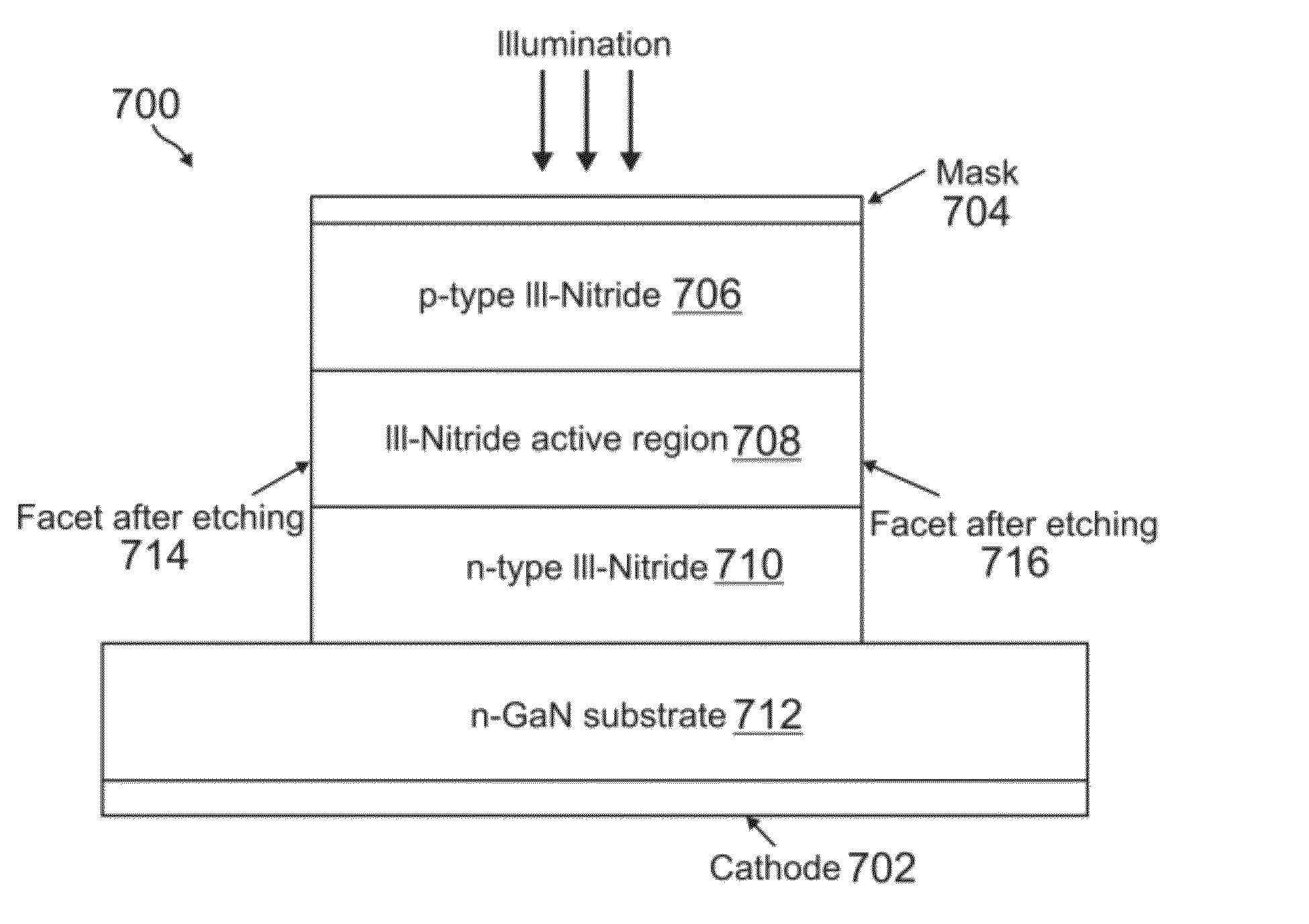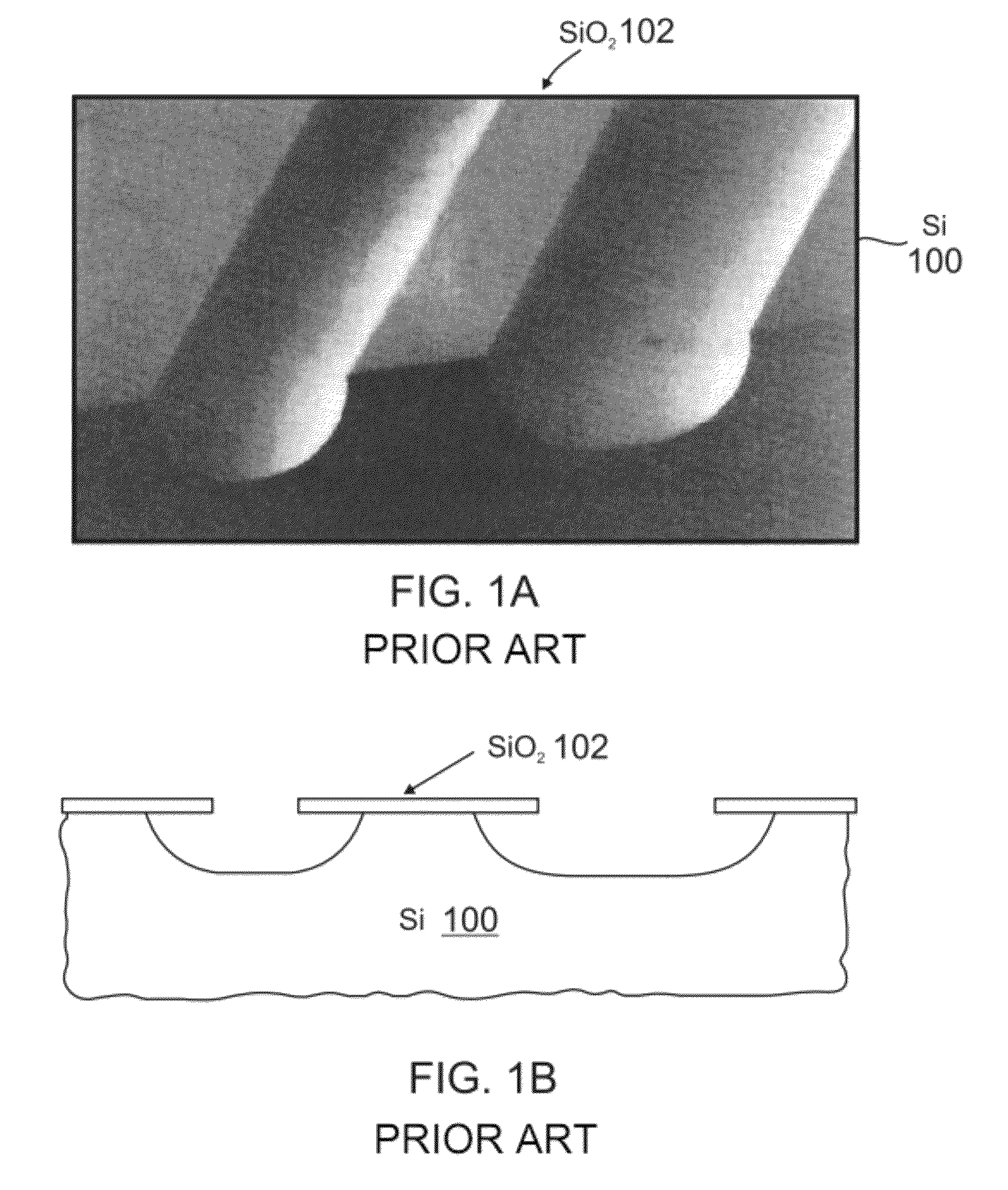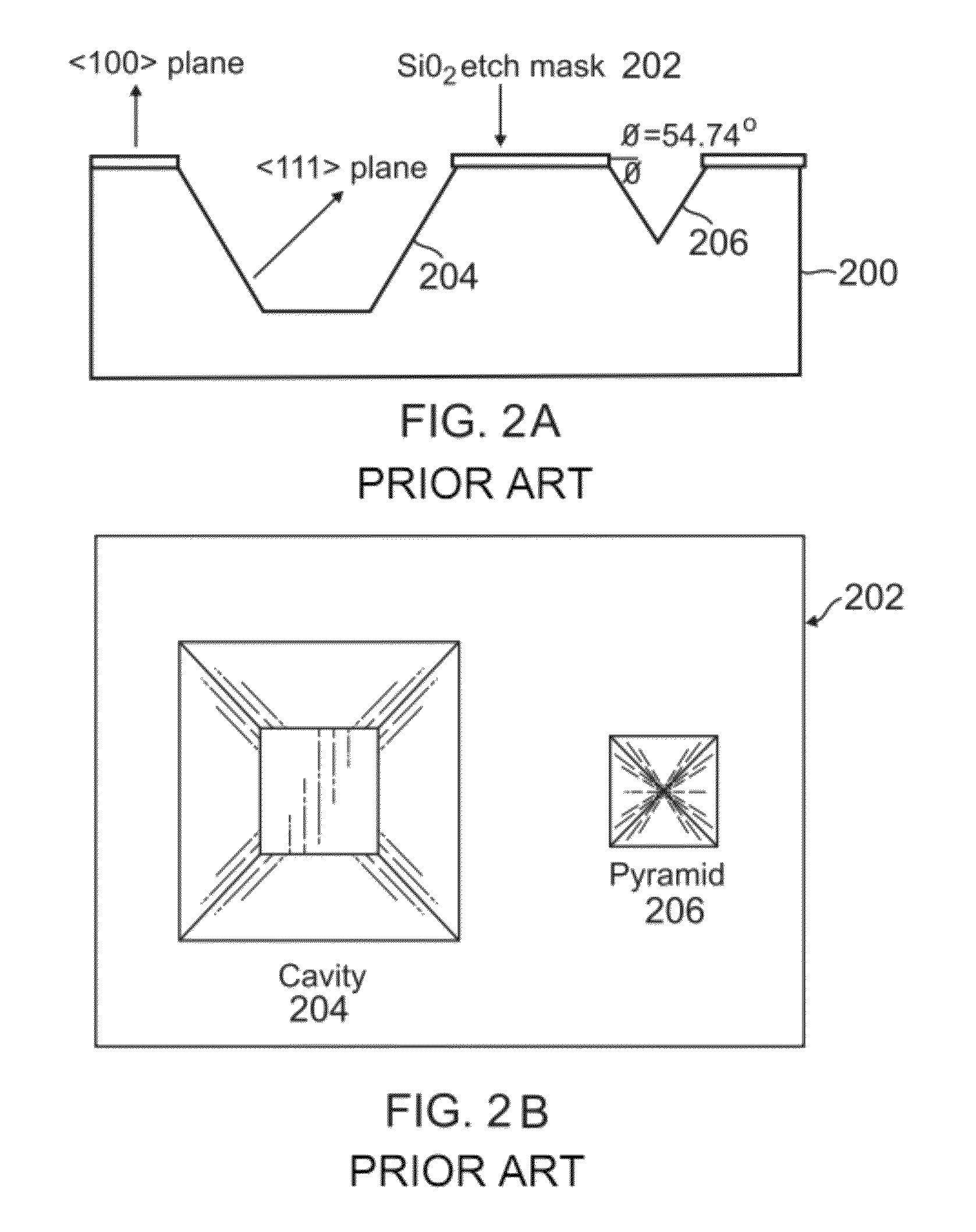Photoelectrochemical etching for laser facets
a technology of photoelectrochemical and laser facets, applied in the direction of lasers, semiconductor lasers, lasers, etc., can solve the problems of not being able to form cleaved facets, formation of smooth facets, and inability to form smooth facets
- Summary
- Abstract
- Description
- Claims
- Application Information
AI Technical Summary
Benefits of technology
Problems solved by technology
Method used
Image
Examples
Embodiment Construction
[0031]In the following description of the preferred embodiment, reference is made to the accompanying drawings which form a part hereof, and in which is shown by way of illustration a specific embodiment in which the invention may be practiced. It is to be understood that other embodiments may be utilized and structural changes may be made without departing from the scope of the present invention.
TECHNICAL DESCRIPTION
[0032]Two concepts are necessary for the present invention:
[0033](1) the ability to etch deep, anisotropic trenches with smooth sidewalls in GaN using PEC etching (which was developed using m-plane GaN substrates); and
[0034](2) the ability to PEC etch p-type semiconductors such as p-type GaN and p-type AlGaN, as described in U.S. Utility application Ser. No. 12 / 464,723, filed on May 12, 2009, by Adele Tamboli, Evelyn L. Hu, Mathew C. Schmidt, Shuji Nakamura, and Steven P. DenBaars, entitled “PHOTOELECTROCHEMICAL ETCHING OF P-TYPE SEMICONDUCTOR HETEROSTRUCTURES,” which a...
PUM
| Property | Measurement | Unit |
|---|---|---|
| concentration | aaaaa | aaaaa |
| etch rate | aaaaa | aaaaa |
| morphology | aaaaa | aaaaa |
Abstract
Description
Claims
Application Information
 Login to View More
Login to View More - R&D
- Intellectual Property
- Life Sciences
- Materials
- Tech Scout
- Unparalleled Data Quality
- Higher Quality Content
- 60% Fewer Hallucinations
Browse by: Latest US Patents, China's latest patents, Technical Efficacy Thesaurus, Application Domain, Technology Topic, Popular Technical Reports.
© 2025 PatSnap. All rights reserved.Legal|Privacy policy|Modern Slavery Act Transparency Statement|Sitemap|About US| Contact US: help@patsnap.com



